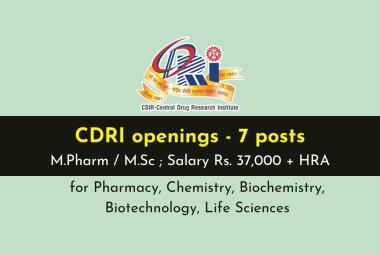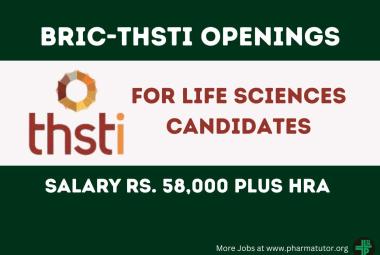{ DOWNLOAD AS PDF }
ABOUT AUTHORS:
Nadia Shahnas*, Akhila.S
Department of pharmaceutical chemistry,
University College of Pharmacy (RIMSR),
Puthupally, Kottayam
nadiya.ameer@gmail.com
ABSTRACT
Alzheimer’s disease (AD) is a complex, multifactorial, progressive, neurodegenerative disease primarily affecting the elder population and is estimated to account for 50–60% of dementia cases in persons over 65 years of age. Natural products, including plants, animals and minerals have been the basis of treatment of human diseases. Secondary metabolites have been the most successful source of potential drug leads and continue to provide unique structural diversity in comparison to standard combinatorial chemistry, traditional medicinal practices have formed the basis of early medicines followed by subsequent clinical, pharmacological and chemical studies which provides opportunities for discovery for many novel low molecular weights lead compounds. In silico approach has been of great importance as a versatile tool to develop fast and accurate target identification and prediction method for the discovery. Traditionally docking was used as computational tool for screening databases of natural products to mine a set of a few candidate drug-like compounds. Reverse docking was a comparatively new application of docking in which a database of proteins (drug targets) was docked against a set of natural products to predict binding affinities. Therefore, plant extracts may in future provide more effective medicines than the single purified natural products of modern medicine, in some cases. Studies on identification of compounds from traditionally used medicinal plants to cure neurodegenerative diseases and brain injuries is increasing scientific interest in recent years as this a major concern in public. In Ayurveda the roots, seeds and leaves of Clitoria ternatea have been widely used as brain tonic and believed to promote memory and intelligence. Hence the present study was designed to assess the Alzheimer’s activity of Clitoria ternatea and to identify and isolate the major bioactive constituent attributing the activity.
INTRODUCTION
Alzheimer’s disease (AD) is a complex, multifactorial, progressive, neurodegenerative disease primarily affecting the elder population and is estimated to account for 50–60% of dementia cases in persons over 65 years of age. The impairment of central acetylcholine (ACh) neurotransmission due to neural degeneration is believed to be a principal neuropathological feature of Alzheimer’s disease. AD occurs in two forms: familial and sporadic. In familial AD, mutations in the amyloid precursor protein (APP), presenilin 1, and presenilin 2 genes are the currently known causal factors. Familial AD constitutes only a small portion (2-3 %) of all AD patients and it has an early age of onset (younger than 65 years). On other hand, sporadic AD, constitutes a vast majority of AD cases and is associated with a late age of onset (65 years and older). Although the specific causes of sporadic AD are still unknown many causal factors seem to be involved in sporadic AD, including aging, mitochondrial defects, insulin-dependent diabetes, environmental conditions and diet. In familial AD, genetic mutations accelerate the disease process, whereas in sporadic AD due to absence of genetic mutation, cellular changes that control AD progression take more time to develop. AD progresses gradually and can last for decades. Enzymatic hydrolysis of acetyl choline (ACH) is an important step in the nerve transport, and its defect results in Alzheimer’s disease.[1, 2, 3] Ellmann’s method is used for determination of Cholinesterase activity and also for monitoring of the ACH hydrolysis by acetyl cholinesterase. The original colorimetric procedure is based on the reaction of thiocholine (one of the products of enzymatic hydrolysis of ACTH) with DTNB, forming yellow colour product5-mercapto-2-nitrobenzoic acid. The maximum absorption coefficient found at 412nmThe reaction is shown below:[4]
Acetyl thiocholine → thiocholine + acetate
Thiocholine + Dithiobis-Nitrobenzoate → 5-mercapto-2-nitrobenzoic acid (yellow colour)
PLANT PROFILE [5]
Botanical Name: Clitoria ternatea
Common Name: Butterfly pea, Blue pea and Cordofan pea
Synonyms: Asphota, Girikarni, Visnukranta, Sankhapuspi, Sephanda, Sveta, Maha
Family: Fabaceae
whole plant [6]
HISTORY
From ancient times “Shankhpushpi” is known as reputed drug of Ayurveda and reported as a brain tonic, nervine tonic and laxative. It is considered as a “Medhya Rasayana” in Ayurveda. It is an Ayurvedic drug used for its action on the CNS (Central Nervous System), especially for boosting memory and improving intellect. The flowers of the plant Clitoria ternatea resemble a conch shell; therefore it is commonly called “Shankhpushpi” in the Sanskrit language where it is reported to be a good “Medhya” (brain tonic) drug and, therefore, used in the treatment of “Masasika Roga” (mental illness). Extracts of this plant have been used as an ingredient in Medhya Rasayana, are juvenating recipe used for treatment of neurological disorders. [7]
HABITAT AND DISTRIBUTION
Clitoriacomprises 60 species distributed mostly within the tropical belt with a few species found in temperate areas. The plant is well adapted to various climates. The plant originated from tropical Asia and later was distributed widely in South and Central America, West Indies, China and India. [8]
PLANT DESCRIPTION
Clitoria ternateahas twining fine stems 0.5-3 m long. The leaves are pinnate with 5-7 elliptic to lanceolate leaflets 3-5 cm long and shortly pubescent under neath. Flowers are solitary, deep blue to blue mauve; very short pedicellate and 4-5 cm long. Pods are flat, linear, beaked, 6-12 cm long, 0.7-1.2 mm wide and slightly pubescent with upto 10 seeds. The seeds are olive, brown or black in colour, often mottled, 4.5-7 mm long and 3-4 mm wide. [8]
Table: Taxonomical Classification [6]
|
Kingdom |
Plantae |
|
Order |
Fabales |
|
Family |
Fabaceae |
|
Genus |
Clitoria |
|
Species |
ternatea |
THERAPEUTIC USES
The juice of flowers is reported to be used in insect bites and skin diseases. The roots are useful in asthma, burning sensation, ascites, inflammation, leucoderma, leprosy, hemicrania, amentia, pulmonary tuberculosis, ophthalmology and reported as bitter, refrigerant, ophthalmic, laxative, diuretic, cathartic, aphrodisiac, tonic. They are considered safe for colic, dropsy and enlargement of abdominal viscera. The root, stem and flower are recommended for the treatment of snake bite and scorpion sting in India.[7, 9]
METHODS AND MATERIALS
COLLECTION AND IDENTIFICATION OF PLANT MATERIAL
Dried Roots of Clitoria ternatea (CT) were collected in February 2013 from commercial market, Attingal, Thiruvananthapuram, Kerala. The plant material was identified and authentified by Dr. K. V George, Department of Botany, C M S College, Kottayam, Kerala. The dried roots were pulverized by an electric blender and the coarse powder was stored in an air tight container.
PREPARATION OF EXTRACT[10]
Hexane extract preparation (HE): 100g powdered root material of CT were macerated with 250ml of Hexane for seven days at room temperature and shaken occasionally for extraction. The resulting extract was filtered and the filtrate obtained was evaporated to dryness using a rotary evaporator to yield hexane extract of CT. The marc was dried and used for further extraction.
Alcoholic extract preparation (AE): The dried marc was placed in a thimble and extracted with 250ml of ethanol in a Soxhlet apparatus for 72 hrs. The extract was filtered and evaporated to dryness to yield Alcoholic extract of CT.
Aqueous extract preparation (AQE): The dried marc was mixed with 300 ml of distilled water in a reflux condenser for 3-4 hrs. The extract obtained was filtered and evaporated to dryness to yield aqueous extract of CT. All the dried extracts obtained were weighed and yield of each extract calculated.
IN VITROFOR ANTICHOLINESTERASE INHIBITION ASSAY (ELLMANN’S METHOD)[11, 12, 13, 14]
PREPARATION OF SAMPLE SOLUTION OF CLITORIA TERNATEA
50 mg of each extracts was weighed and was dissolved in 50 ml of water to produce 1mg/ml. From the stock solution, various concentrations ranging from 25 to100 µg/ml were prepared.
PREPARATION OF 0.1M PHOSPHATE BUFFER PH 7.4
5.44g of potassium di hydrogen phosphate was dissolved in 200 ml of distilled water and 0.84g of sodium hydroxide was dissolved in 100 ml of distilled water separately. From above solutions 62.5 ml of potassium di hydrogen phosphate was taken and was added 48.7 ml of sodium hydroxide. It was made up to 200 ml with distilled water.
PREPARATION OF SUBSTRATE ACETYL THIOCHOLINE IODIDE (ATCI)
0.02167g of acetyl thiocholine iodide was dissolved in 10ml of 0.1 M phosphate buffer and stored in refrigerator for use.
PREPARATION OF REAGENT 5, 5’-DITHIOBIS-2-NITROBENZOIC ACID (DTNB)
0.0396 g of 5, 5’-dithiobis-2-nitrobenzoic acid and 0.015g sodium carbonate were dissolved in 10 ml of 0.1M Phosphate buffer and used for study.
PREPARATION OF ENZYME
Venous blood was collected into dried heparinized tubes and subjected to centrifugation. Plasma was removed carefully without losing any erythrocytes. The erythrocytes are then suspended in water in a volume corresponding to the initial volume of whole blood, followed by 60-fold diluted with buffer (0.1M Phosphate buffer PH7.4). Then the suspension had frozen in order to haemolyse the erythrocytes. [15]
METHOD
To 0.4 ml of enzyme and 0.5ml 5, 5’-dithiobis-2-nitrobenzoic acid, 0.4 ml of sample was added and incubated for 15 minutes at 25oC. The reaction was then intitated with the addition of 0.1ml of acetyl thiocholine iodide. The rate of absorbance was monitored at wavelength 412 nm. The AchE inhibitory activity was calculated using the equation:[12, 13, 15, 16]
A- (B-C)*100/A
A represents Control (Reagents + solvent + Enzyme)
B represents Sample (Reagents + Sample + Enzyme)
C represents Blank of Sample (Reagents + Sample + solvent)
CHEMICAL PROFILING OF BIOACTIVE (AQUEOUS EXTRACT) BY LC-MS METHOD
Aqueous Extract was resuspended in water and used for LC-MS study. The Column used was Phenomenex RP 18, 25cm × 2.5mm and the Mobile Phase Acetonitrile: Methanol in the ratio 50:50 was used for the study. The ionization mode used was Electron spray ionization. Ionization range was at 50-1000. The Software used for identification Class was VP integrated Library (Metwin 2.0). [17]
DOCKING STUDY WITH IDENTIFIED COMPOUNDS FROM LC-MS WITH RECEPTOR 4FRJ [18, 19, 20]
STEPS INVOLVED IN AUTODOCKING
Rigid docking was performed and hence, protein and the ligand molecule were non-flexible. Here Amyloid β protein (PDB ID: 4FRJ) was used as receptor and ligand molecules were all the constituents identified in the aqueous extract of Clitoria ternatea using LC-MS.
PREPARATION OF RECEPTOR
The Auto dock software was opened by clicking on Auto dock icon from desktop.
The downloaded PDB molecule 4FRJ in the work space panel was read by clicking on the tab “File”and then selected “Read molecules
Hydrogen Atoms and Charges
The tools available in ADT were used to read coordinates in PDB and other formats, to add hydrogen, to selected portions of the molecule, and to add partial charges. These functions were all accessed through menus at the top of the ADT window.
• File> Read Molecule: Opens a browser that allows reading of PDB coordinate files.
• Edit> Delete: Several options for deleting entire molecules, selected sets of atoms or hydrogen atoms.
• Edit> Hydrogen> Add: Options for adding all hydrogens or polar hydrogens.
• Edit> Charges: Options for computing Gasteiger charges for arbitrary molecules.
• File> Save> (receptor.PDBQT
PREPARATION OF LIGAND
Prepared ligands can be processed in the “Ligand” menu to create the ligand PDBQT file.
Ligand> Input> open: reads coordinates from a file.
Ligand> Input> choose: chooses a molecule already read into ADT
Ligand> Torsion Tree> Choose Root: manual selection of the root atom.
Ligand>Torsion Tree> Detect Root: Automatic detection of the root that provides the smallest largest sub tree.
Ligand> Output: Opens a browser to write the formatted ligand. PDBQT file.
GENERATION OF GRID
For docking calculations using rigid receptor coordinates, the hydrogen atoms and charges in ADT, were added.
Grid> Macromolecule> Open: Launches a browser to open an existing PDBQT file.
Grid> Macromolecule> Choose: Chooses a molecule that has been previously read into ADT. Merged non-polar hydrogen atoms and charges, assign aromatic carbons, and prompt the user to write a PDBQT file.
PREPARATION GRID PARAMETER FILE
Select> select from string > Residue> name of active site found by Q site finder> add> dismiss: Select the residue to be flexible.
Display> label> by properties> select name and number> from one or more properties> Ok.
Grid> grid box: Interactive commands were launched for setting the grid dimensions and center. The numbers were entered on the thumb wheel, placed the cursor over the thumb wheel and type the new value. Right clicking on the thumb wheel gave more options. IMPORTANT: when finished, use the “close saving current” option in the “File” menu on the Grid Options Panel. Options in the “Center” menu on the browser provide different methods to choose the center of the grid box.
Grid> Output> save by grid.gpf: Save grid settings as gpf file.
PREPARING DOCKING PARAMETER FILE (.DPF)
Docking> Macromolecules> Set rigid filename (choose receptor.PDBQT): Specifying the rigid molecules.
Docking> Ligand> choose> (choose ligand.PDBQT) > accept: Specifying the ligand molecules.
Docking> Search parameter> Genetic Algorithm>( for first time short number of evaluations and for other runs choose medium or long> accept: Setting the parameters chosen for the docking method.
Docking>docking parameters> choose the defaults: Setting docking parameters.
Docking> Output> Lamarckian GA> dock.dpf: The name was specified on the ligand dpf file to be formed, containing the docking instruction.
RUNNING OF DOCKING
Pwd Enter
Cd folder: Enter
Cd folder (sub folder) Enter
./autogrid4.exe –p grid.gpf –l grid.glg
./autogrid4.exe –p dock.dpf –l dock.dlg
Visualization of docking was done by chimera.
ISOLATION OF BIOACTIVE CONSTITUTENT
DETERMINATION AND OPTIMIZATION OF SOLVENT SYSTEM BY TLC [21, 22, 23, 24]
PREPARATION OF THE THIN LAYER CHROMATOGRAPHY (TLC)
The TLC plate was prepared by suspending silica gel G powder in distilled water. The slurry was poured carefully on to the glass plate to get uniformly coated plates. The plates were air dried and kept in an oven at 100-120°C about 30 minutes for activation.
DETERMINATION OF SOLVENT SYSTEM SOLVENT SYSTEM
Different solvent systems viz Toluene: Ethyl acetate, Toluene: Chloroform: Ethanol, Ethyl acetate: acetic acid and Toluene: Ethyl acetate: Acetic acid were tried out to select the suitable solvent system for the identification of maximum chemical constituents present in aqueous extract
THE COMPOUND ON TLC PLATE
The origin is marked by drawing a thin line across the bottom of the plate with a pencil. The aqueous extract was spotted with a glass capillary tube on to the plate.
RUNNING OF TLC
The spotted plate was placed into the saturated chamber; preventing the sample from dissolving from the plate into the eluent layer. When the eluent reaches 3/4of the plate, the plate was removed from the chamber. The point that the eluent had reached is called the eluent front and was immediately marked with a pencil. The plate was dried by allowing the eluent to evaporate form the plate.
VISUALIZATION OF SPOTS ON TLC PLATE
A developed TLC plate was sprayed with Vanillin sulphuric acid and visualized spots were marked. Distance travelled by solute and solvent was measured to calculate the Retardation factor of solute using the following equation
Rf = Distance travelled by solute front / Distance travelled by solvent front
ISOLATION OF CHEMICAL CONSTITUTENT BY COLUMN CHROMATOGRAPHY
PACKING OF COLUMN
A cylindrical glass column was taken and plugged with a small piece of cotton.
Mounted the column on the stand.
Weighed 20 g of fresh silica gel (for column chromatography 60-120 mesh) into a 250 mL beaker.
Mixed with 100ml of Toluene: Ethyl acetate (8:2) into the beaker was stirred well using a glass rod to made slurry of the silica.
Poured the slurry into the column.
Placed a beaker below the mounted column to drain out the excess solvent.
Closed it when the level of the solvent reached just above the settled silica gel.
PREPARATION OF SAMPLE
5g of aqueous extract was dissolved with eluent and equal amount of silica gel was added to it. Mixed thoroughly by continuous stirring in one direction till solvent got evaporated.
METHOD[25, 26, 27]
For column chromatography sample was loaded on to the column packed with adsorbent silica gel G (100-200 mesh). The mobile phase was added from the top of the column and allowed to flow down by gravity. Elutants was collected from the bottom of the column and was stored as fractions of 10 ml. Each fraction was analyzed by TLC and those with same pattern were pooled. Fifth fraction which gave a single spot and Rf similar to the bioactive constituent, β-sitosterolwas evaporated and subjected to IR, NMR and MASS spectroscopy studies.
RESULT
EXTRACTION YIELDS
Extractive yields for each extract were calculated and Aqueous extract found have more yield than other two extracts.
Table: Extractive Yields of Various Extracts of Clitoria ternatea
|
S.l:No: |
Extracts |
Extractive Yield of dry Sample (g) |
|
1 |
Hexane (HE) |
3.20 |
|
2 |
Alcoholic (AE) |
2.66 |
|
3 |
Aqueous (AQE) |
3.48 |
Preliminary screening
The preliminary phytochemical screening of hexane extract, alcoholic extract and aqueous extract were done to identify the phytoconstituents and the results obtained were tabulated in the table
Table: Phytochemical Screening
|
Sl.No: |
Chemical Tests |
Observation |
Inference |
||
|
|
Detection of Alkaloids |
|
HE |
AE |
AQE |
|
Mayer's test |
Yellow ppt |
- |
+ |
+ |
|
|
Wagner’s test |
Reddish ppt |
- |
+ |
+ |
|
|
Dragendroff’s test |
Red ppt |
- |
+ |
+ |
|
|
Hager’s test |
Yellow ppt |
- |
+ |
+ |
|
|
Detection of carbohydrates |
Violet ring at the junction of test tube |
- |
+ |
- |
|
|
Molisch’s test
|
|||||
|
|
Benedict’s test |
Red ppt |
- |
+ |
- |
|
Fehling’s test |
Red ppt |
- |
+ |
- |
|
|
Detection of Glycosides |
Rose pink colour in the ammonical layer |
- |
+ |
- |
|
|
Modified Borntrager’s test |
|||||
|
Legal’s test |
Blood red colour |
- |
+ |
+ |
|
|
Detection of Phytosterols |
Golden yellow colour |
+ |
- |
+ |
|
|
Salkowski’s test |
|||||
|
Libermann Burchard’s’ test
|
Formation of brown ring at the junction of test tube Yellow ppt |
+ |
- |
+ |
|
|
Detection of Phenols |
Bluish black colour |
- |
+ |
+ |
|
|
Ferric chloride test |
|||||
|
Detection of Flavonoid’s |
|
|
|
|
|
|
Alkaline reagent test |
Intense yellow colour |
- |
- |
+ |
|
|
Lead acetate |
yellow colour |
- |
+ |
+ |
|
|
Detection of Tannins |
|
|
|
|
|
|
Ferric chloride test |
Greenish ppt |
- |
- |
+ |
|
|
Potassium Hydroxide |
Dirty white ppt |
- |
- |
+ |
|
|
Detection of Saponins |
Formation of 1cm layer foam |
- |
+ |
+ |
|
|
Froth test |
|||||
|
Foam test |
Foam produced persists for ten minutes |
- |
+ |
+ |
|
|
Detection of Proteins and amino acids |
yellow colour |
- |
- |
- |
|
|
Xanthoproteic test |
ANTI- CHOLINESTERASE ACTIVITY BY ELLMAN’S METHOD
The extracts were tested for their inhibitory effects against acetyl cholinesterase and compared with neostigmine as standard. The results obtained were tabulated in the table
Table: Percentage inhibitions obtained for anti- cholinesterase assay
|
S.l.No: |
Concentration |
% Scavenging |
|
1. Standard (Neostigmine) |
25 |
68.53 |
|
50 |
82.64 |
|
|
75 |
83.25 |
|
|
100 |
84.88 |
|
|
2. Hexane Extract |
25 |
42.08 |
|
50 |
42.91 |
|
|
75 |
44.72 |
|
|
100 |
45.69 |
|
|
3. Alcoholic Extract |
25 |
53.32 |
|
50 |
62.50 |
|
|
75 |
64.81 |
|
|
100 |
68.04 |
|
|
4. Aqueous Extract |
25 |
75.69 |
|
50 |
77.63 |
|
|
75 |
78.55 |
|
|
100 |
79.86 |
A graph was plotted taking Concentration on X-axis and percentage scavenging on Y-axis and results were depicted in the figure.
Concentration Vs. Percentage Inhibition
From the graph, IC50 values were calculated for each extract and standard. The values were tabulated in the table and graphically represented in the figure.
Table: Comparisons of IC50 values of various Extracts with Neostigmine
|
S.l:No: |
Extracts |
IC50 (µg/ml) |
|
1 |
Neostigmine (Standard) |
10 |
|
2 |
Hexane |
100 |
|
3 |
Alcoholic |
22 |
|
4 |
Aqueous |
12 |
Graphical representations of IC50 Values of extract with Neostigmine
REFERENCE ID: PHARMATUTOR-ART-2231
|
PharmaTutor (ISSN: 2347 - 7881) Volume 2, Issue 9 Received On: 20/06/2014; Accepted On: 24/06/2014; Published On: 01/09/2014How to cite this article: N Shahnas, S Akhila; Phytochemical, In Vitro and In Silico Evaluation on Clitoria Ternatea for Alzheimer’s Disease; PharmaTutor; 2014; 2(9); 135-149 |
LIQUID









